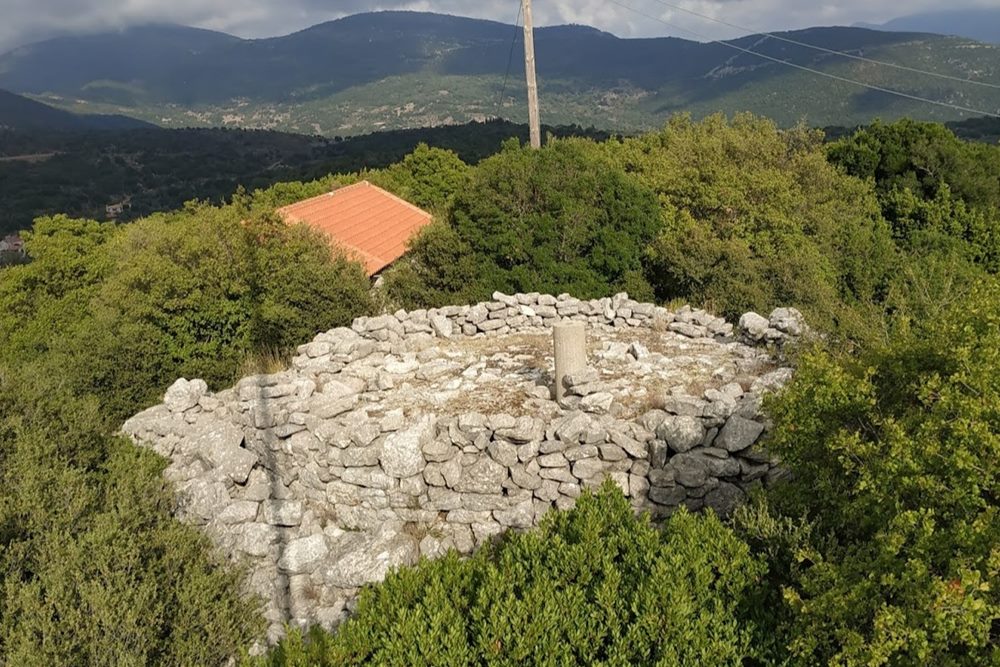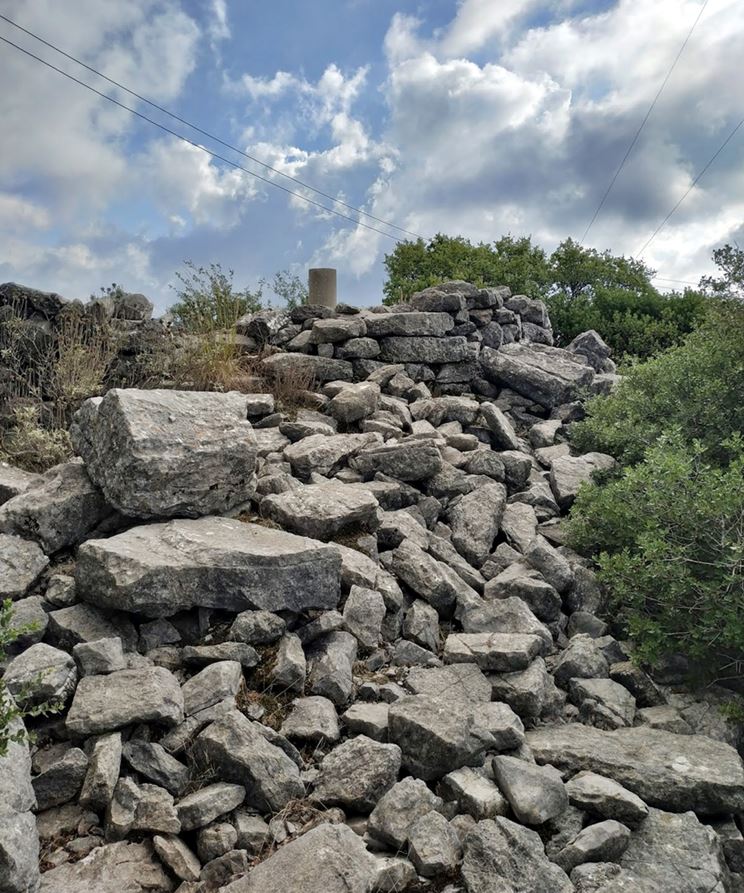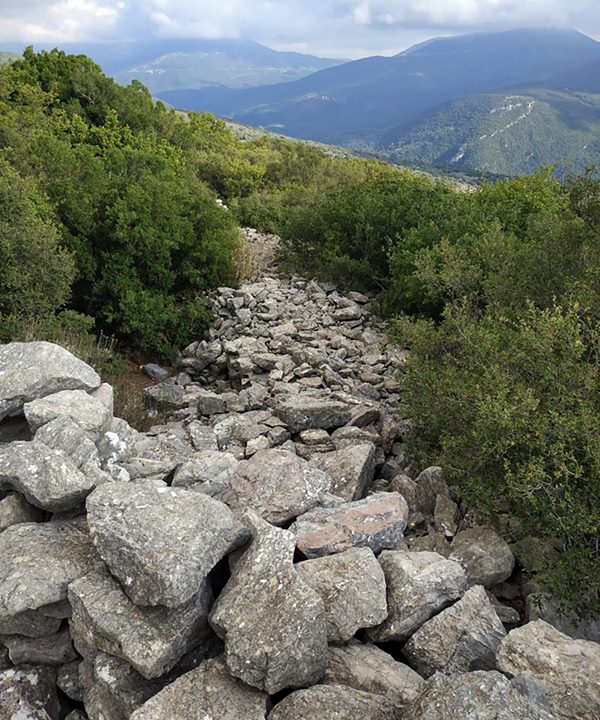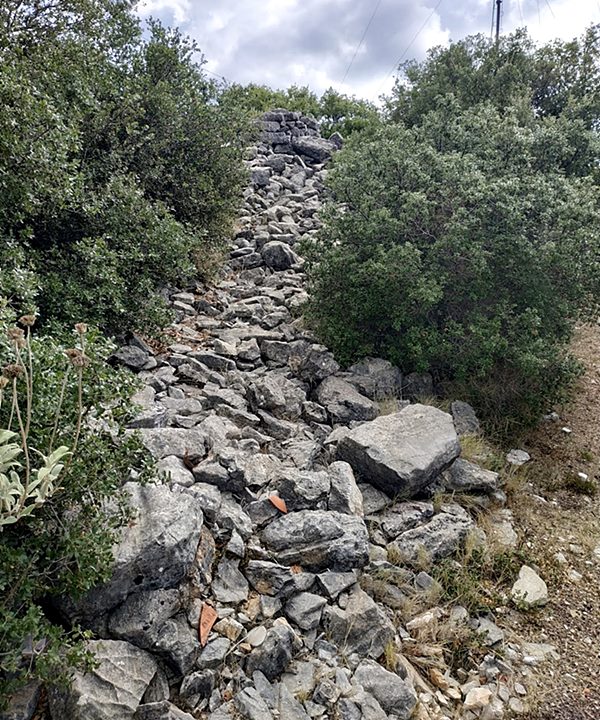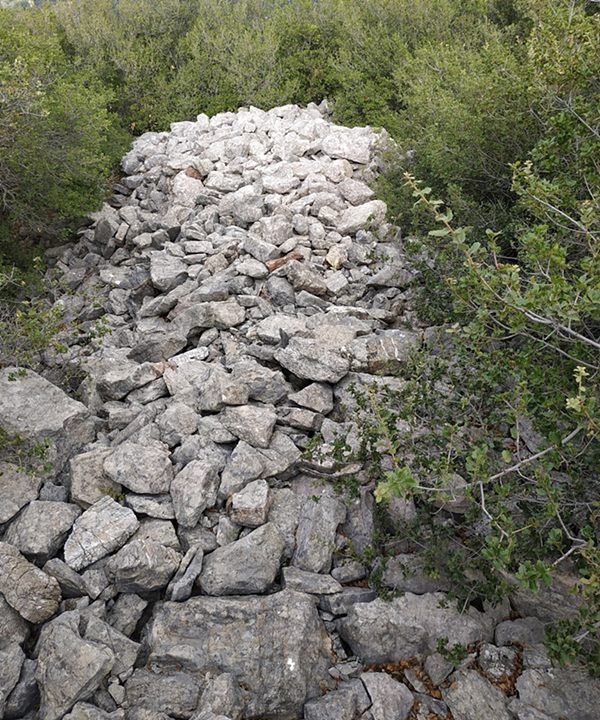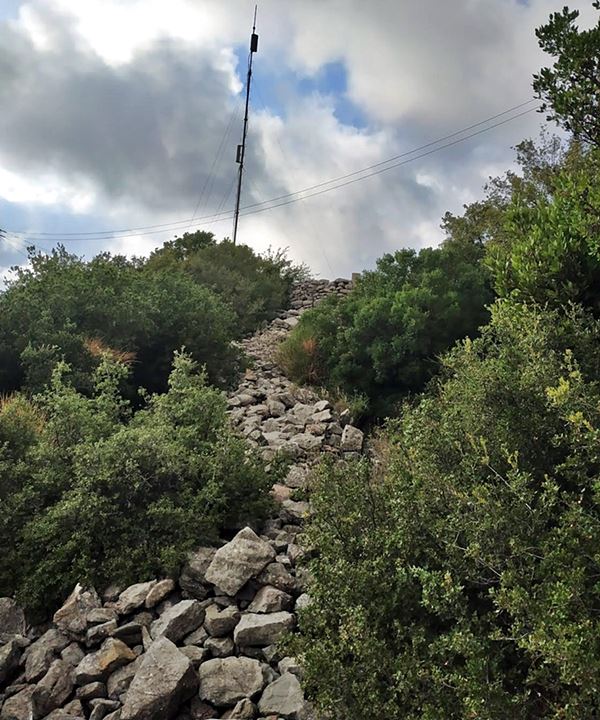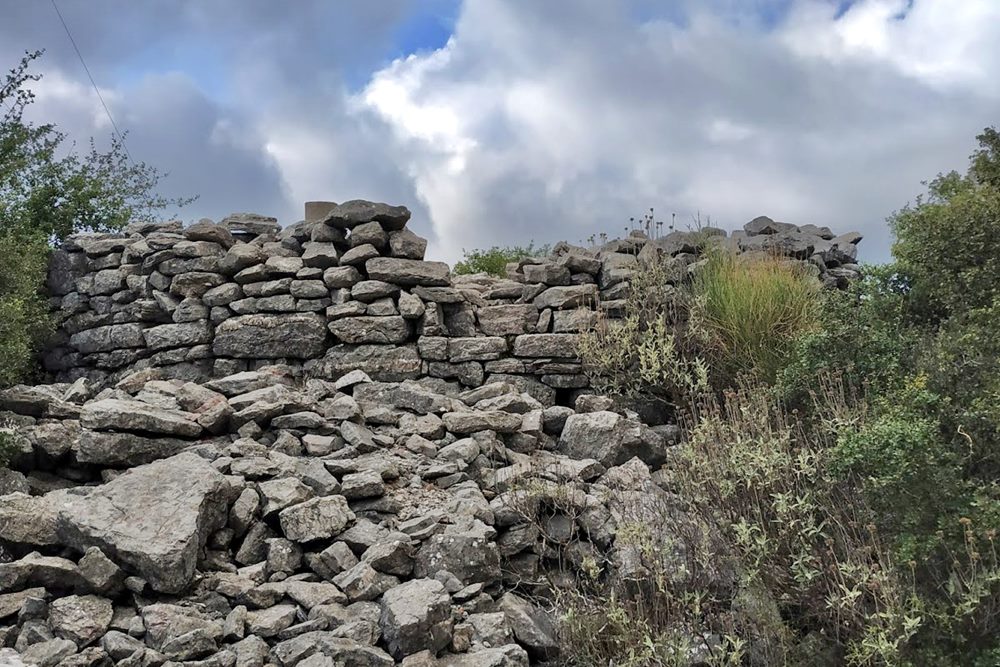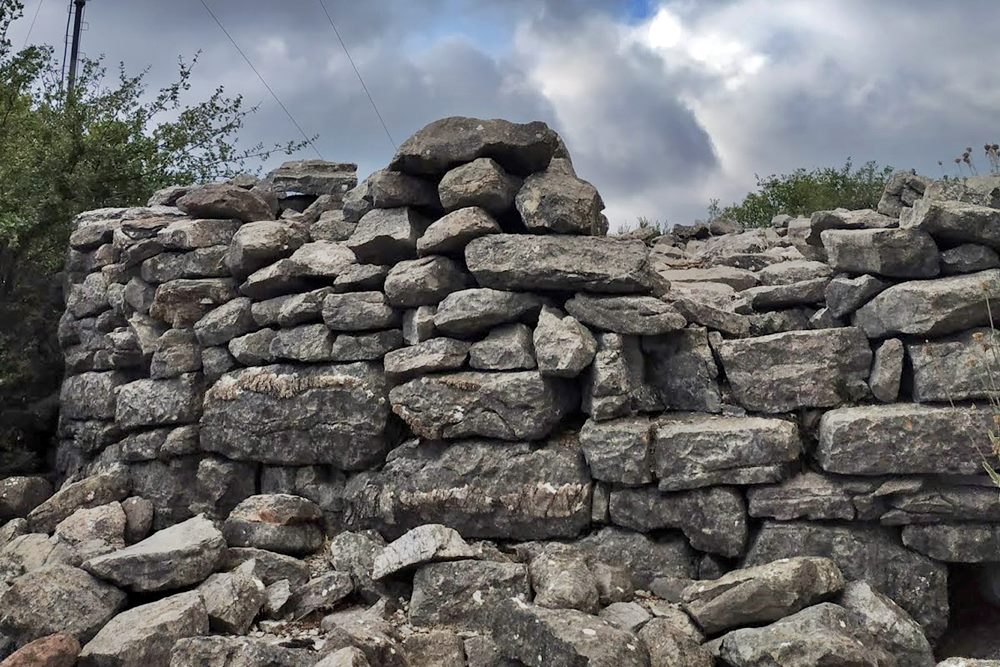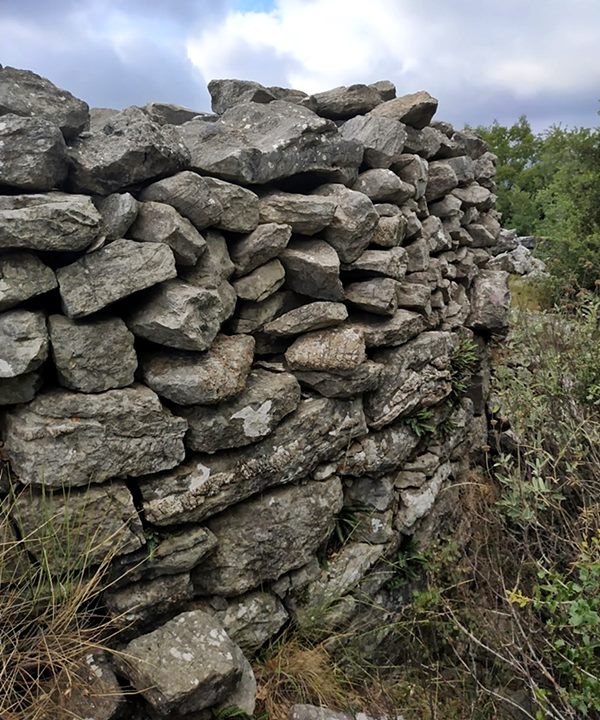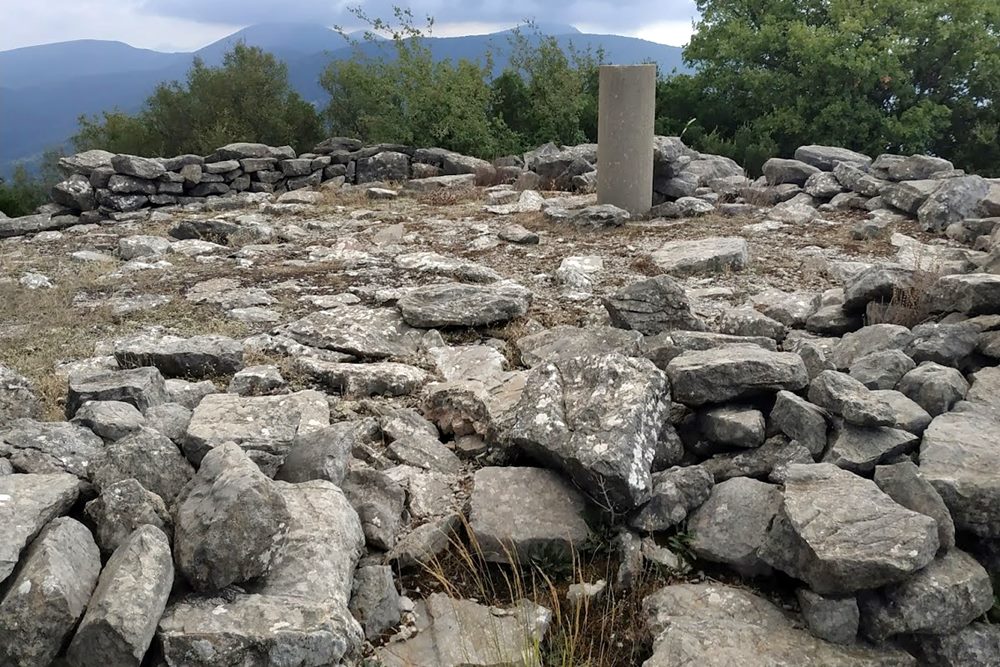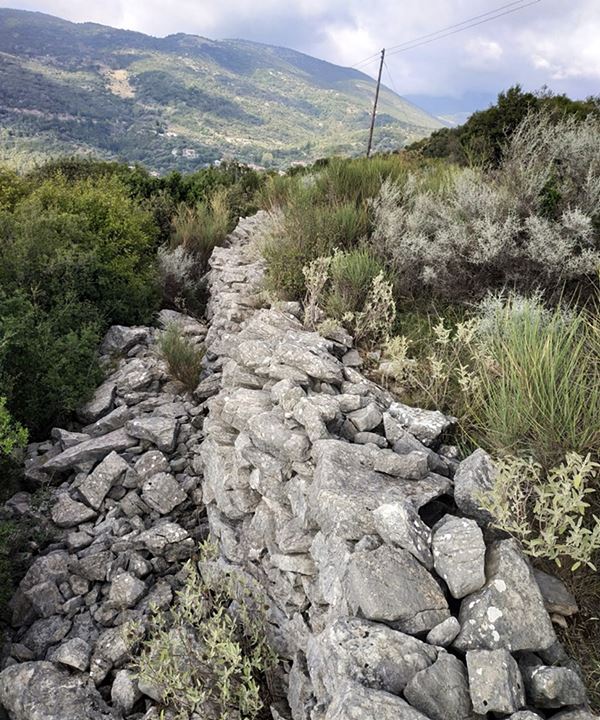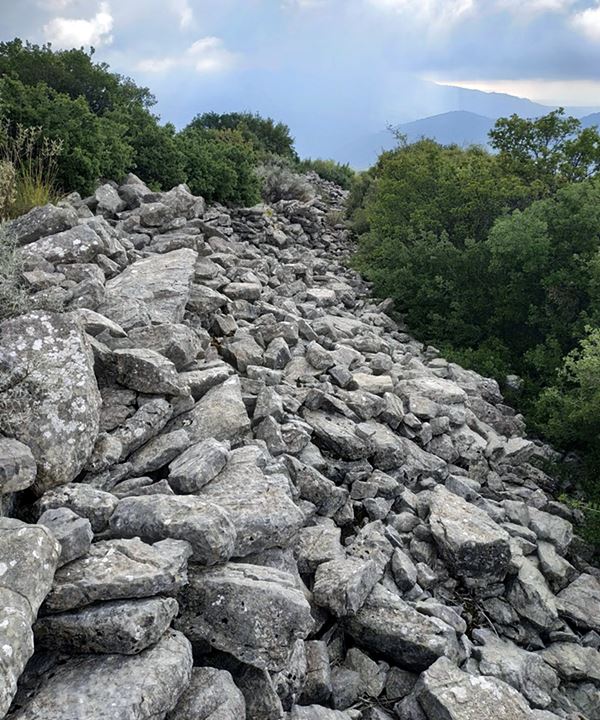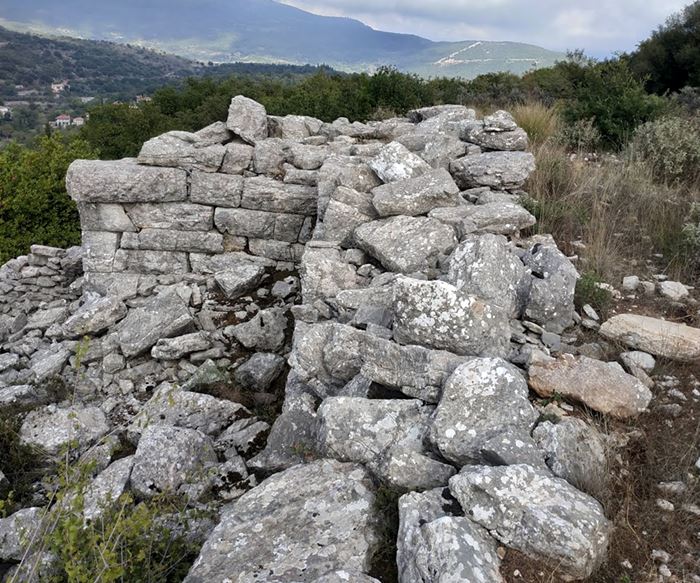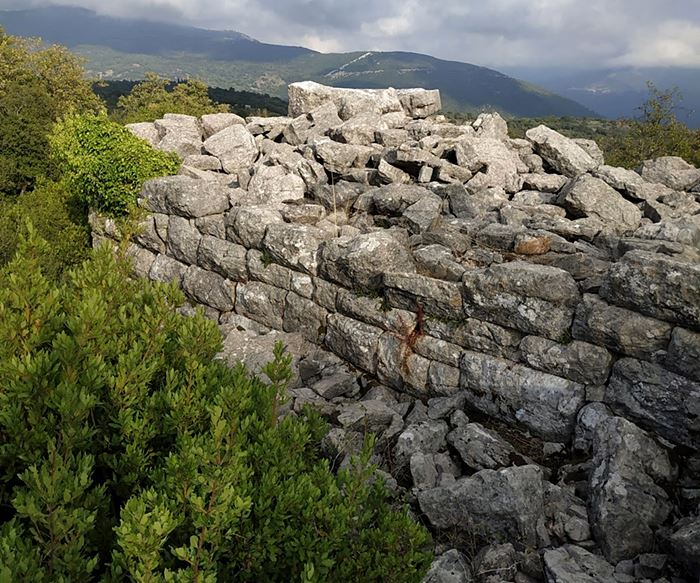Perivolia, Zacharo, Elis,West Greece
Castle of Figaleia
| Location: |
| Atop the Profitis Elias hill at the archaeological site of Figaleia in Elis, SW of the village Perivolia |
| Region > Prefecture: | 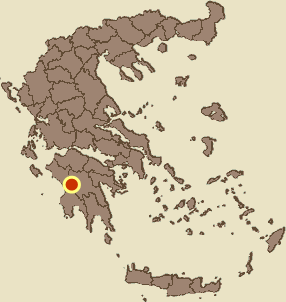 |
| West Greece Elis | |
| Municipality > Town: | |
| City of Zacharo • Perivolia | |
| Altitude: | |
|
Elevation ≈ 720 m (Relative Height≈200 m) |
| Time of Construction | Origin | |
| Various periods | ANCIENT |
|
| Castle Type | Condition | |
| Castle Ruins |
In Ruins
|
Remains of a medieval fortification with a tower on the hill of Profitis Ilias, at the highest point of the archaeological site of ancient Figalia, north of the modern village of Figalia and southwest of the village of Perivolia (which is closer).
The castle is identified with the Frankish Castle of Politsa in the Skorta region.
The old name of the modern village of Figalia was “Paulitsa” and, for the Franks, “Politsa”. The place is located in the prefecture of Elis, near the river Neda, on the border with Messinia. Regardless of the modern geographical districts, ancient Figalia was an Arcadian city, at the heart of the classic Arcadia.
History
The ancient city had a strong and impressive fortification, part of which is saved today. Figalia was an important city in antiquity. Its people had control of the Sanctuary of Apollo in the area of Vasses, at a distance of about 7 km east of their city, and in honor of the god erected a well-known monument, the temple of the Epikourios Apollo which is today one of the UNESCO World Heritage Sites.
The city remained inhabited in the early Byzantine period and is listed in the Synekdemos of Ierocles (around 535 AD). It is also mentioned in some other sources including the lexicon of Souda (10th cent.).
During the Frankish rule, the city resurfaced under the name Poliça. With this name is mentioned in the Aragonese version of the Chronicle of Moreas, in the narrative of the events of 1263/1264: After the battle of Makryplagi and the victory against of Byzantines, the castle was given by the prince Villeardhuin as a prize to Melik, the head of the Turkish mercenaries (actualy the prince arranged the marriage of Melik with the widow of the lord of Poliça, while apparently Melik was converted to Christianity).
In the list of castles of the Peloponnese of 1467 it is noted as ruined, under the name Spoliza. In various documents of the Venetian period is recorded as Paulizza.
Structure, Fortification & Buildings
The ancient city spreads over a large plateau for about 4 square km, of which almost 1 sq.km is enclosed inside a fortification, which is the most imposing monument of the ancient city, built ίη the 5c BC with parts rebuilt in the 4c BC.
The medieval part is on the acropolis of this large walled city, atop the hill of Profitis Ilias, occupying only a small part of the massive old fortification, just 2200 sq.m. It is a wall with an elliptical outline 200m long, with a circular tower at the western end. It consists of irregular stones of small and large size without mortar, with a thickness of about two meters. The building material comes from stones of the ancient wall in second use.
Most part has collapsed and in several places has been covered by dense vegetation. The best preserved is the south side wall.
In the western corner of the elliptical wall is the central tower, which is a circular building located at the highest point of the hill (720 meters) with a diameter of 5 meters. It has been built on the foundations of an ancient circular tower with a later complement of semi-finished stones from above. It is preserved to a max height of 2m.
At the drawing below is shown the position of the acropolis (and the medieval fortification) in relation to the rest of the fortification of the ancient city (orange outline).
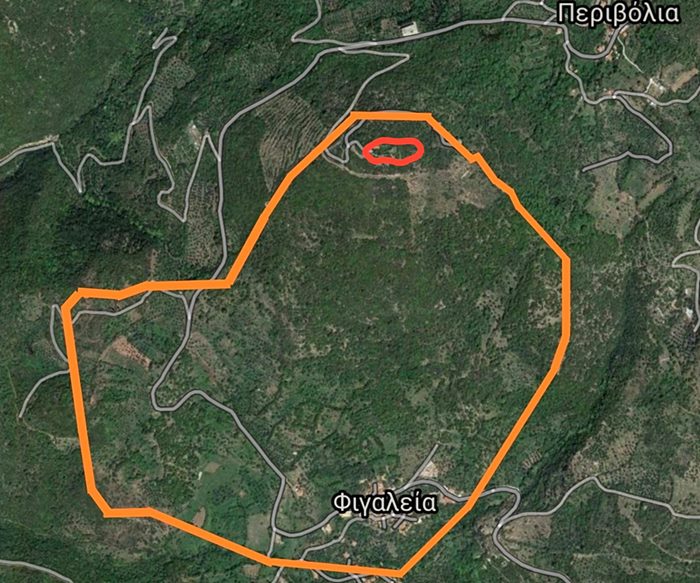
| First entry in Kastrologos: | June 2020 |
Sources
- Research, photographs and info by Sakis Lemonakis and his blog ΑΜΦΙΤΡΕΙΔΗΣ
- Konstantinos Kourelis, “MONUMENTS OF RURAL ARCHAEOLOGY MEDIEVAL SETTLEMENTS ΙΝ ΤΗΕ NORTHWESTERN PELOPONNESE”, Presented to the Faculties of the University of Pennsylvania in Partial Fulfillment of the Requirements for the Degree of Doctor of Philosophy, 2003 — #89, pg. 355-357
- Website ΑΡΙΣΤΟΜΕΝΗΣ Ο ΜΕΣΣΗΝΙΟΣ - ΑΡΧΑΙΑ ΦΙΓΑΛΕΙΑ
|
|
| Access |
|---|
| Approach to the monument: |
| Starting from Figalia to the village of Perivolia, at 2 km there is a dirt road on the right, uphill and rugged. Follow that road, and after 600m reach the top of the hill, where is the acropolis. |
| Entrance: |
| Free access |



